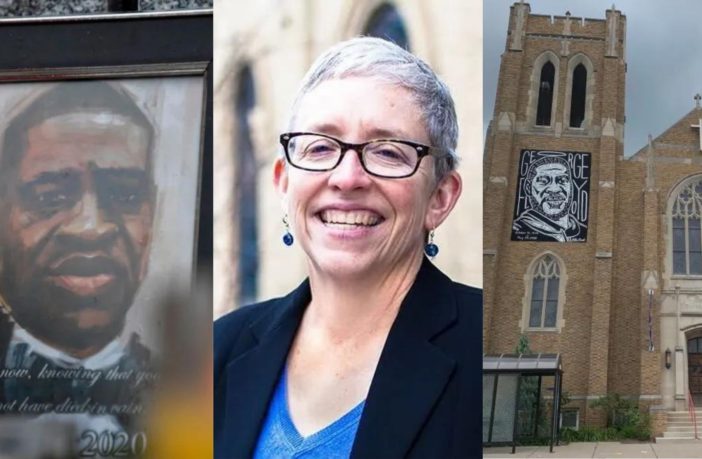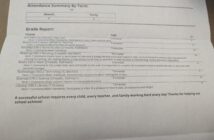A member of Calvary Lutheran Church says they’ve learned to be “gentle with each other so we can be dangerous together.”
By Rev. Dorothy S. Boulware
Word in Black
May 25, 2024, marks four years since George Floyd was murdered — on May 25, 2020 — by White former Minneapolis police officer Derek Chauvin. Chauvin, who was found guilty of second-degree murder in April 2021, rested his body weight on Floyd’s neck as Floyd cried out, “I can’t breathe.” Chauvin stayed there for 9 ½ minutes until Floyd died.
Floyd’s murder happened outside the Cup Food Store at East 38th Street and Chicago Avenue in the Powderhorn Park neighborhood of Minneapolis. Just a block away, at 39th Street and Chicago Avenue, stands Calvary Lutheran Church, whose pastor is Hans Lee.
Little did the congregation know how this moment in history would catapult them into a central role in the transformation of their neighborhood.
Word in Black spoke with Shari Seifert, a member of Calvary who allowed herself to be swept up into the emerging community that has become George Floyd Square, a gathering place for comfort, sustenance, and the assurance that one need not be alone. She told her story in her book, “Ashes to Action,” and shared some of her experiences with Word in Black.
Word In Black: How did you first learn of George Floyd’s murder?
Shari Seifert: I received a video in the middle of the night. The same night. That was how I found out. And the video was the first I’d heard of his murder.
WIB: What did you do after seeing the video?
SS: I tried to go back to sleep, but I was horrified. And then this person reached out to me and we talked about doing a protest march. So I called — it was the first of many calls to my pastor — to say, ‘Hey, Pastor Hans, can we launch this march out of our parking lot?’ He agreed, so we just jumped into action and did that. Of course, it was huge. And honestly we had many members that joined the march.
I didn’t join in. I’m not sure why. But I stayed back at the church, and I made sure everyone got home. You know, it was COVID and people weren’t sharing rides together. But we figured out how to get everyone home from the Third Precinct building. And I thought that was going to be it. Because Philando Castile had been killed not that long ago, and it was on video, and nothing happened.
WIB: What happened the next day?
SS: I belong to a group called the European Descent Lutheran Association for Racial Justice. We got together, and we made a statement about the brutality, including the murders of Breonna Taylor and Ahmaud Arbery.
People were streaming into the Square to pay respects. And some people were driving crazy. And so just regular neighbors put up barricades with whatever they could find to slow down the traffic so people wouldn’t be hurt. And people began to bring stuff, like it’s a funeral. They brought food and water, masks and all kinds of stuff that we shoved into the narthex of the church.
WIB: What did you do with it all?
SS: We started what we eventually called the community table. So we just had a table on the corner with food and water and snacks and all kinds of drinks. We kind of laughed about it, but it was a serious need. We called it the “ministry of bathroom” because we would let people come in and use our bathroom. Now we have porta potties in the square because that’s just what the community does.
WIB: What was going on beyond the square?
SS: Within a few days, all the grocery stores were burned down. We didn’t have public transportation. The pharmacies were burned down. The post office was burned down. It was kind of a mess. My wife was running the food shelf, which went from serving 25 families a week to serving 177 families a week. There was a lot of need, so we were scrambling.
WIB: What else was going on?
SS: The National Guard came in. What was really interesting is most of the time, the square — the center is at 38th and Chicago, and then it would extend out to the ends of those blocks — was really relatively peaceful. The police came in and messed up some of the stuff. I think that was before we had the barricades up. But they were bad actors. And many of the National Guard were bad actors. It was dystopian.
WIB: Did they feel you were being disloyal by helping the folks, as opposed to, in some way supporting them?
SS: I don’t know what was going on in their minds. They were against everyone, you know? Even the journalists. My pastor had a tear gas canister whiz past his head. And you know, standing there in his collar. But yeah, the journalists were not protected like they normally are.
There was a show, I guess, they called it “The Reckoning,” I think. It was put on by the journalism department at the University of Minnesota. Journalists came from all over and they had photos up and all that. They were just talking about their experience. Many of them had covered wars, and they said this was the most dangerous they had ever felt. And it was because of the police.
WIB: Why was your church so ready for this? You sprung right into action.
SS: Calvary was ready to meet the moment after George Floyd was murdered because of the years of work we did on anti-racism and dismantling White supremacy. Because Calvary is a close community with resilient relationships, and simply because of where we were located. We also had a pastor who understood that his place at this time was not to be front and center, but to run interference as needed.
So we had really been doing some deep work for a long time, starting in about 2011. We had like a really nice, solid, multiracial race equity committee.
WIB: Tell me about the Five Assumptions of George Floyd Square.
SS: First, assume everyone has COVID. Mask up or back up. Secondly, this is America, assume everyone is armed. It pays to be patient and polite. Third, assume everything you say and do is being recorded. If you don’t want someone to hear it or see it, don’t say it or do it. But if you say something around the circle, say it with your whole chest. The fourth is, assume that not everyone has your idea of liberation in mind. You can’t be betrayed if you know what’s up. And the fifth is, assume we’re all crazy. Anyone in movement space has been through some trauma. Thwarted expectations can come out sideways. Let’s be gentle with each other so we can be dangerous together.
Responses were lightly edited for length and clarity.
This article was originally published on WordinBlack.com.



